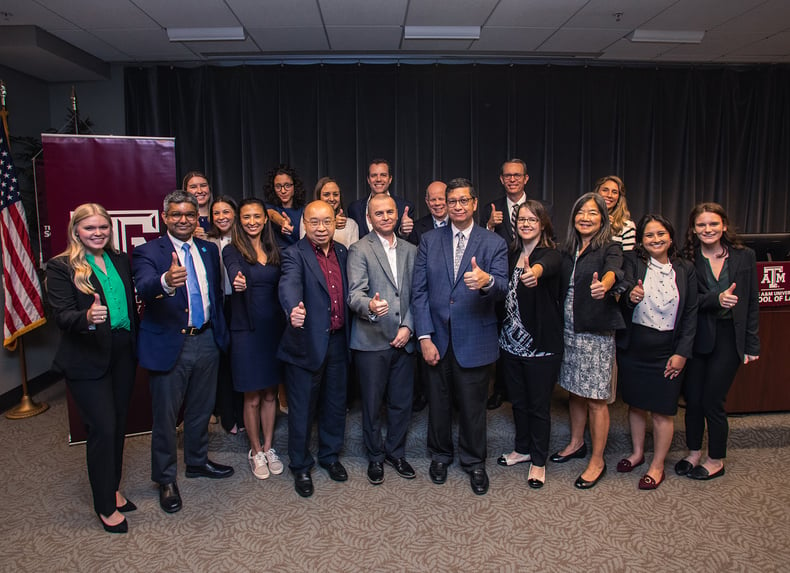
On October 6, 2023, the Texas A&M Journal of Property Law welcomed speakers, practitioners, and students to its annual Symposium entitled “Drawing the Line: Who Really Owns Intellectual Property?” The symposium explored the intersection between intellectual property, morals, and ethics via two books from distinguished authors.
The first book, The Genome Defense, is Professor Jorge Contreras’s account of the events surrounding one of the most pivotal gene-patenting cases of the modern era, Association for Molecular Pathology v. Myriad Genetics. As opposed to typical legal writing, Professor Contreras describes the intricacies of the relevant patent and administrative law in a narrative format, allowing those who read the book to understand the ethical dilemmas surrounding patents on isolated DNA compositions. The speakers for the panel—Professors Ana Santos Rutschman, Arti Rai, Patti Zettler, Dave Fangundes, and Jim Farringdon—provided further commentary by describing how companies have adapted to the Myriad decision, in addition to describing how the case may be implicated in pending mRNA patent litigations through their individual experiences such as FDA, pharmacy, and general property perspectives.
The second book, Professor Ned Snow’s Intellectual Property and Immorality, presents a courageous stance against the author-admitted norm, arguing that we should begin to consider morality when deciding what writings and inventions are worthy of copyright and patent protection. The panel’s speakers—Professors David Taylor, Cathay Smith, Saurabh Vishnubhakat, and Maggie Chon—unanimously agreed that, perhaps, there are some creations that should fall outside the scope of intellectual property protection. While some speakers offered hypothetical tests of morality—such as Professor Chon’s “human-flourishing” test—others questioned the administrative practicality of implementing such tests.
This year’s Symposium provided an excellent opportunity for those who attended to learn about current trends in intellectual property law and to network with experts in the field.